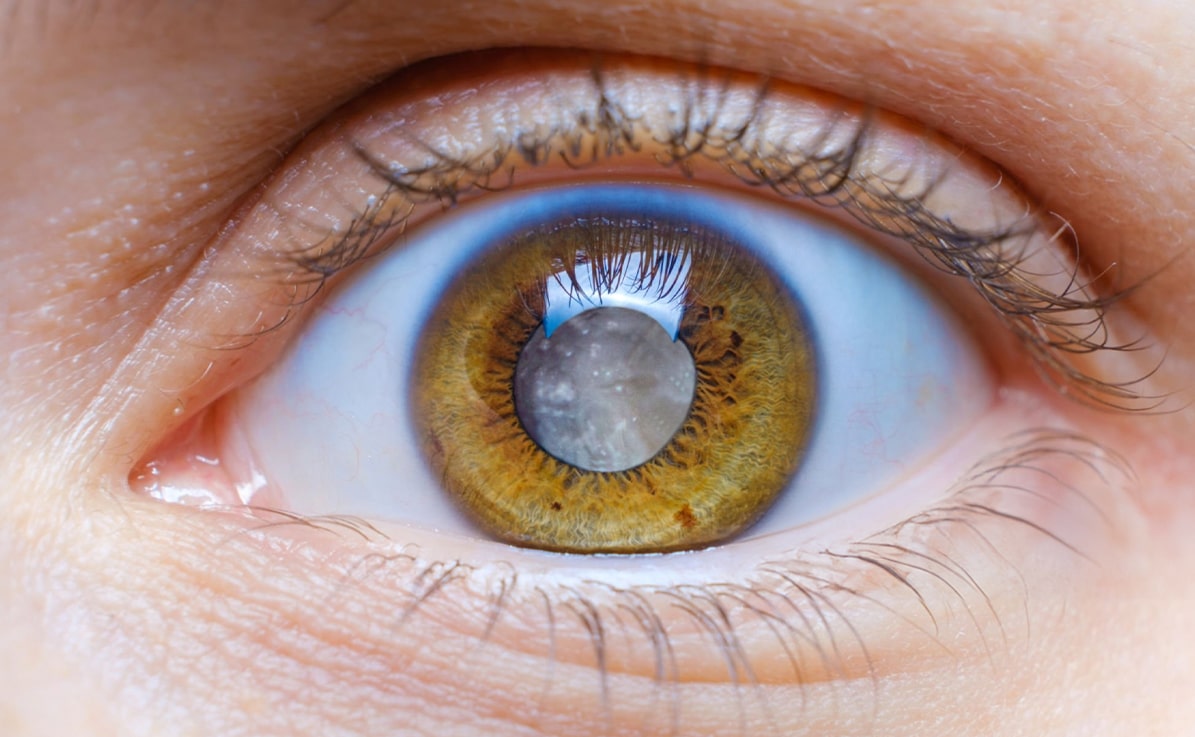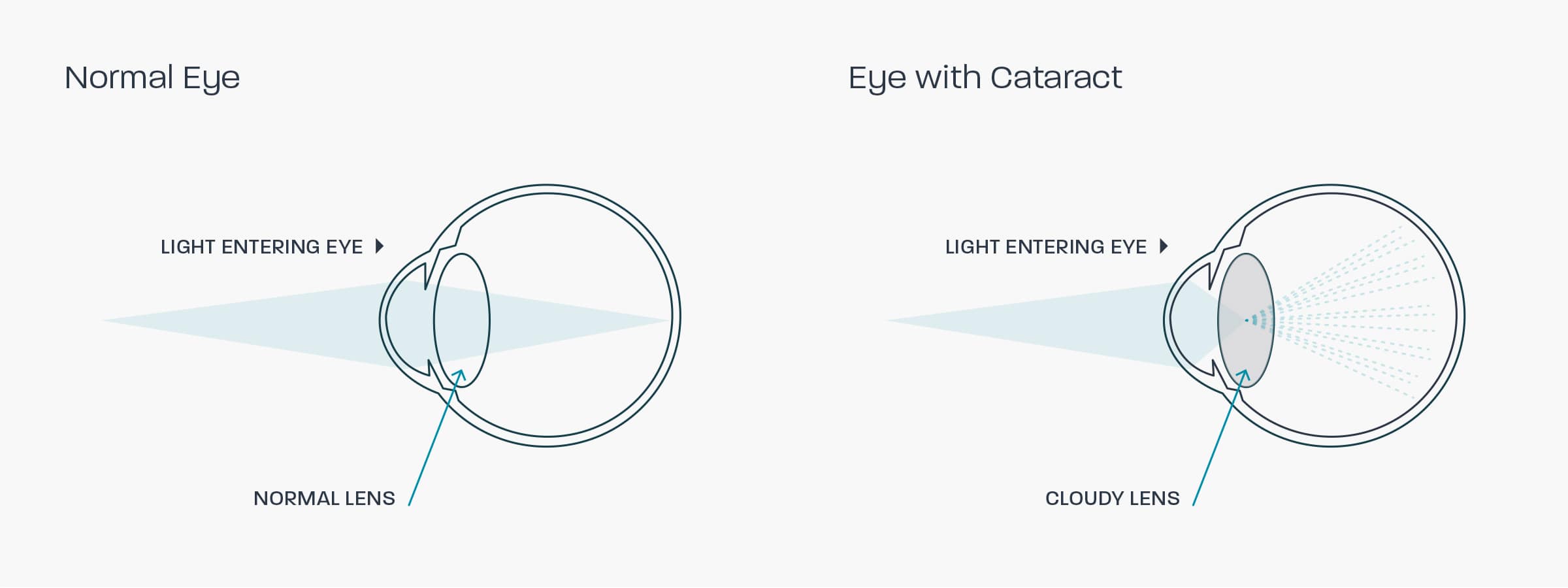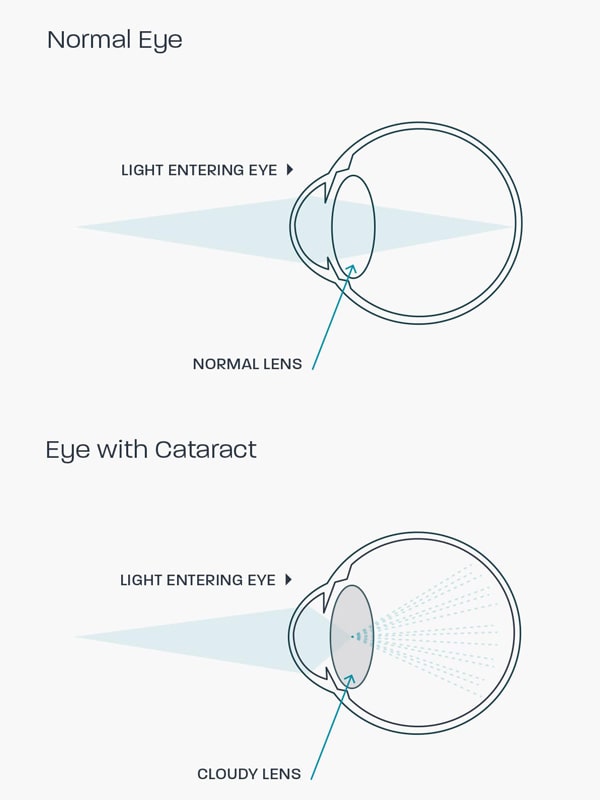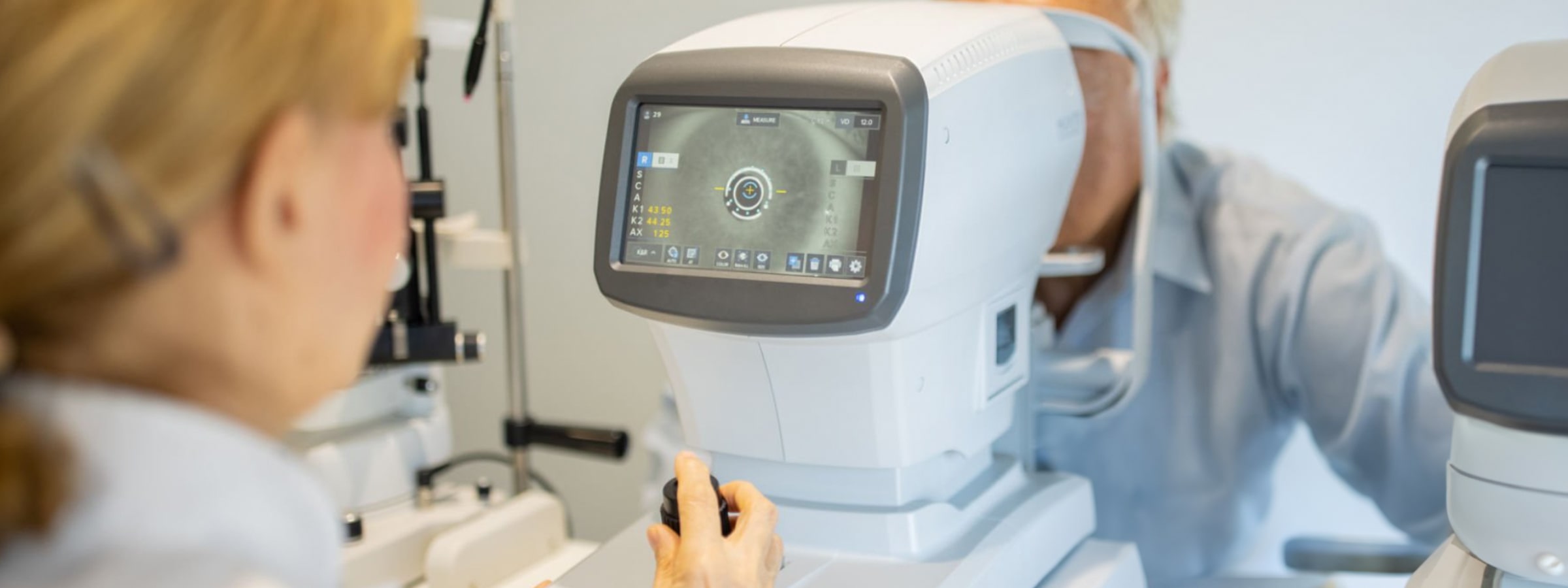Search based on the size of your current glasses
- Shop by shape
- Shop by colour
- Shop by size


Cataracts happen when the transparent lens inside your eye becomes opaque and develops cloudy patches with age. In a healthy eye, the lens transmits light on the retina at the back of the eye which forms images. However, when cataracts develop, the cloudiness of the lens stops the light from being passed to the retina and therefore interferes with your vision and makes it more difficult to see clearly. Instead, the images appear blurry or ‘milky’. Imagine looking through frosted glass at objects in the distance, this is similar to what it’s like to have cataracts. It is a very common eye condition for people over the age of 65 years.


There are three different types of cataracts, which include:
Nuclear cataracts form in the centre of the lens and cause it to become yellow or brown. It makes it harder to distinguish between colours.
Cortical cataracts are wedge-shaped and affect the outer edge of the lens.
Posterior sub-capsular cataracts form at the back of the lens. They interfere especially with reading and cause glare or haloes to form around lights at night. These types of cataracts tend to develop more quickly than others.


Cataracts are painless and you will not typically notice any redness or irritation around the eyes, but you may have small spots where your vision is not so clear.
Cataract symptoms may be unnoticeable at first and normally take a long time to develop over several years. They frequently appear in both eyes to similar or varying degrees.
Most people experience cataracts as they get older as the eye naturally becomes denser, less flexible and less translucent with age. Tissues in the lens start to disintegrate and form clusters of protein that clouds small sections of the lens. As the cataracts grows, it becomes more obvious and affects bigger areas of the lens. Light is then unable to pass through these cloudy areas.
In a majority of cases, it is an age-related eye condition but there are some other factors that can increase your risk of developing cataracts. You may be more prone to them if close members of your family have cataracts, you’ve experienced trauma to the eye, you smoke or drink excessively, have a poor diet, or are diabetic. If you don’t protect yourself from exposure to UV light throughout your life, this can also lead to the development of cataracts. This is why, among other reasons, it’s important that your glasses lenses have a UV coating and that you have a reliable pair of sunglasses.
If your cataract is less severe, a stronger prescription for your glasses and use of a brighter reading light may help you for a short period of time. However, cataracts do get worse after many years, so ultimately you will be required to undergo cataract surgery to remove and replace the affected lens. This will typically be recommended if your loss of vision is impacting your daily routine and ability to carry out activities like reading or driving. A cataract operation is a routine procedure that can be done under local aesthetic, it normally takes approximately 20 minutes.